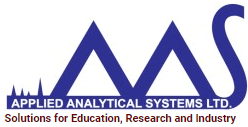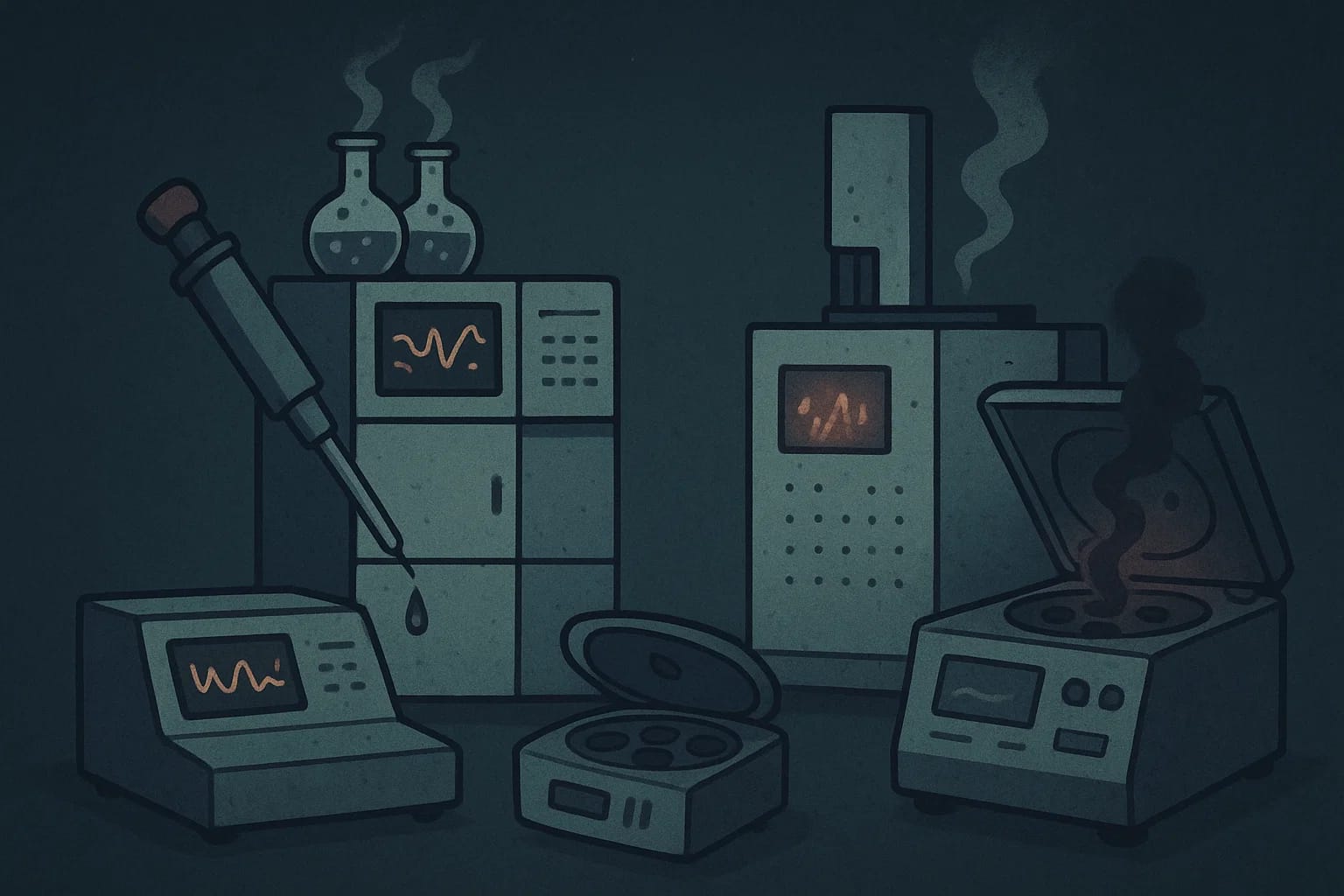The Silent Saboteur in Your Lab
Imagine this: The air in your lab is thick with the hum of machinery, a symphony of precision and progress. But beneath the surface, a discordant note begins to sound. It’s subtle at first – a faint whir, a slightly off reading, a fleeting moment of hesitation from a trusted instrument. For the discerning lab manager in Nigeria, operating under the relentless gaze of NAFDAC audits and the pressure to deliver unimpeachable results, these aren’t just minor glitches. They are the silent screams of your lab equipment, signals that, if ignored, can unravel months of meticulous work, jeopardize your hard-earned accreditation, and cast a long shadow over your professional credibility. This isn’t just about a machine breaking down; it’s about the integrity of your lab, the trust of your clients, and the very future of your operations.
Every lab manager knows the gnawing anxiety that accompanies an impending audit. The quiet dread of inconsistent results that could lead to costly re-runs and wasted samples. The deep frustration of unreliable vendor support that leaves you stranded when every second counts. These aren’t just technical issues; they are psychological burdens that keep you awake at night, threatening to undermine everything you’ve built. You’ve invested heavily in your lab, not just financially, but with your reputation and relentless dedication. To see it compromised by a preventable equipment failure is a betrayal of that investment.
This isn’t just another article about maintenance. This is about safeguarding your lab’s reputation, ensuring perpetual compliance, and securing your peace of mind in an environment where precision is paramount and oversight is constant. We’re going to decode the subtle language of your lab equipment, revealing the top five signs that it’s not just aging, but actively begging for your attention. Understanding these signals is the first step. Acting on them is how you transform anxiety into assurance, and potential disaster into sustained excellence.
Introduction: Beyond the Beeps and Whirs
For laboratory professionals in Nigeria, the challenges of maintaining peak operational efficiency extend far beyond the typical. From the unpredictable fluctuations in power supply that can wreak havoc on sensitive electronics, to the often-frustrating delays in sourcing genuine spare parts and receiving timely, competent OEM support, the landscape is uniquely demanding. You’ve likely experienced the exasperation of waiting weeks, sometimes months, for a critical component to arrive, or the disappointment of a service engineer who lacks the nuanced understanding of your specific, multi-vendor environment. These aren’t mere inconveniences; they are systemic hurdles that can cripple your research, halt your production, and expose your lab to significant regulatory risks.
Your lab equipment is more than just an assembly of metal, glass, and circuits. It is the beating heart of your operations, the meticulous guardian of your data, and the indispensable foundation of your compliance. Every pipette, every chromatograph, every spectrophotometer plays a critical role in delivering accurate, reliable results that underpin crucial decisions – from public health and safety to industrial quality control. When these instruments falter, the ripple effect is profound, impacting not just your immediate workflow but the very trust placed in your laboratory.
Many labs fall into the reactive maintenance trap, waiting for a catastrophic breakdown before taking action. This approach, while seemingly cost-saving in the short term, accrues hidden costs that far outweigh any perceived savings. We’re not just talking about the exorbitant fees for emergency repairs or the expedited shipping of parts. We’re talking about the invaluable loss of operational time, the erosion of staff morale due to constant frustration, the potential for rejected batches, and, most critically, the risk of non-compliance during a NAFDAC audit. The cost of silence, of ignoring those subtle cues, is a debt no lab can afford to pay.
The good news? This cycle of anxiety and reactive crisis can be broken. The solution lies in proactive vigilance – in understanding the subtle, often overlooked cues your equipment sends before it screams for help. By learning to interpret these signals, you can transition from a state of perpetual firefighting to one of strategic foresight, ensuring your lab operates with unwavering precision and unwavering confidence. Let’s delve into the five critical signs that your lab equipment is trying to tell you something vital.
The 5 Silent Screams: Signs Your Lab Equipment Needs Help
Sign 1: Inconsistent or Drifting Results
In the meticulous world of laboratory analysis, consistency is king. When your trusted instruments begin to deliver results that fluctuate without apparent cause, or show a gradual drift away from expected values, it’s not just a minor anomaly; it’s a blaring siren. For Nigerian labs, this issue is often compounded by environmental factors and infrastructure challenges. Are your calibration standards always met, or do you find yourself constantly re-calibrating? Are your power lines stable, or do frequent surges and dips subtly corrupt your sensitive electronics? Even the quality of reagents, often sourced from varied suppliers, can play a role in these inconsistencies, making accurate diagnosis a complex dance.
The impact of inconsistent or drifting results is immediate and severe. Failed quality control checks become a routine headache, leading to endless re-runs, wasted precious samples, and a significant drain on your budget. More critically, such inconsistencies can lead to NAFDAC non-compliance, risking product recalls, fines, and even the suspension of your operating license. Imagine the frustration of your clients when their product release is delayed, or worse, when their trust in your lab’s data is irrevocably shaken. This isn’t just about a few bad readings; it’s about the integrity of your entire analytical process and the reputation you’ve painstakingly built.
Consider the chilling account of a lab manager in Lagos, whose HPLC system, a workhorse for critical pharmaceutical analysis, began showing slight but persistent drifts in retention times. Initially dismissed as minor variations, these drifts escalated. A batch of vital drug samples, destined for market, was ultimately rejected by a regulatory body due to data that, while seemingly within acceptable limits, showed subtle inconsistencies traceable to the instrument. The cost? A complete re-analysis of the entire batch, delaying market entry by weeks, incurring significant financial penalties, and forcing a painful, public explanation to stakeholders. The root cause? A combination of an aging pump seal and intermittent power fluctuations that had slowly degraded the instrument’s performance, signals that were missed until it was almost too late. Proactive steps like scheduled, traceable calibration, investing in stable power solutions, and rigorous environmental control are not optional; they are the bedrock of reliable data.
Sign 2: Increased Downtime and Frequent Breakdowns
There’s a pervasive myth in some circles that lab equipment, especially the robust, industrial-grade machinery found in regulated environments, is built to last indefinitely without significant intervention. This belief often leads to an over-reliance on reactive maintenance – the frantic, costly scramble to fix an instrument after it has failed. For many Nigerian labs, this is exacerbated by the logistical nightmare of sourcing genuine spare parts locally, the often-glacial response times from international OEMs, and the scarcity of skilled, multi-vendor technicians who truly understand the intricacies of diverse lab setups. Each breakdown isn’t just a technical failure; it’s a productivity killer, a budget drain, and a source of immense stress.
The consequences of increased downtime are multifaceted and crippling. Missed deadlines become the norm, leading to frustrated clients and damaged business relationships. Your highly trained staff, instead of conducting critical analyses, are left idle, a significant waste of valuable human resources. Revenue streams dry up as production targets remain unmet, and the lab’s overall profitability takes a severe hit. Beyond the financial implications, the constant cycle of breakdowns and emergency repairs erodes morale, fosters a culture of uncertainty, and can severely damage your lab’s reputation within the industry. No lab can afford to be seen as unreliable, especially when dealing with sensitive compliance matters.
Consider the harrowing experience of a QA manager at a major food processing lab in Port Harcourt. Their critical packaging tester, essential for ensuring product integrity and NAFDAC compliance, began experiencing intermittent failures. Each time, a technician was called, a temporary fix applied, and the machine limped along for a few more days before failing again. The situation reached a breaking point just weeks before a crucial NAFDAC inspection. The tester, vital for demonstrating product safety, completely seized up. The frantic search for an immediate solution revealed that the required part had to be imported, with an estimated lead time of several weeks. The inspection loomed, and the lab faced the very real prospect of a non-compliance citation, or worse, a temporary shutdown. This horror story, unfortunately, is not unique. It underscores the brutal reality that waiting for equipment to fail is not a strategy; it’s a gamble with your lab’s future. A robust preventive maintenance schedule, coupled with strategic local partnerships for parts and expertise, is the only way to ensure continuous operation and audit readiness.
Sign 3: Unusual Noises, Vibrations, or Odors
Your lab equipment, when operating optimally, produces a predictable set of sounds, vibrations, and even subtle odors. These are its normal operating signatures. When these change – a new hum, a grinding noise, excessive vibration, or an unfamiliar smell – it’s not just an annoyance; it’s a critical warning sign. Too often, these early indicators are overlooked or dismissed as minor quirks, especially in busy lab environments where staff are stretched thin. The assumption that a machine will simply continue to function until it completely breaks down is a dangerous gamble, one that can lead to far more severe consequences than a simple repair.
Ignoring these subtle cues can lead to catastrophic equipment failure, transforming a minor issue into a major, costly repair. Beyond the financial burden, there’s the immediate safety hazard to your personnel. A malfunctioning centrifuge, for instance, with unusual vibrations, could become a projectile risk. A faint burning smell from an electrical component could escalate into a fire. These aren’t hypothetical scenarios; they are real dangers that can disrupt your operations, endanger your team, and trigger investigations from regulatory bodies. The extended downtime required for major repairs, often involving importing specialized parts, can set your lab back weeks, if not months.
Recall the incident at a prominent research lab in Abuja, where a high-throughput plate reader, a cornerstone of their diagnostic work, began emitting a faint, intermittent grinding sound. The lab technicians, accustomed to the machine’s usual operational noises, initially paid it little mind, attributing it to normal wear. However, the sound gradually intensified, accompanied by a slight increase in vibration. Despite these escalating warnings, no immediate action was taken. Then, without warning, during a critical batch run, the machine seized completely. The internal mechanism had suffered irreparable damage due to a worn-out bearing that had been grinding for weeks. The cost of replacement was astronomical, and the lab faced an agonizing three-month wait for the new unit to be shipped and installed. This single oversight led to significant project delays, a backlog of samples, and a substantial, unplanned expenditure. This story serves as a stark reminder: your equipment communicates its distress long before it fails. Learning to listen to these subtle warnings, and acting on them promptly, is a hallmark of a truly proactive lab.
Sign 4: Excessive Consumable Usage or Waste
In a continent where every Naira counts and budget optimization is not just a goal but a survival strategy, excessive consumable usage or waste is a silent killer of profitability. If your lab is suddenly going through more reagents, solvents, or other disposables than usual, and there hasn’t been a corresponding increase in workload, your equipment might be the culprit. This often points to inefficiencies caused by poorly maintained instruments, or a lack of proper operator training on optimal usage protocols. It’s a subtle drain on resources that can go unnoticed for weeks, even months, masked by the assumption of increased activity or simply accepted as an unavoidable operational cost.
The financial implications of this sign are significant. Increased operational costs directly impact your lab’s bottom line, leading to budget overruns and reduced profitability. Beyond the immediate financial hit, there are environmental concerns associated with increased waste, and a general inefficiency that can hinder your lab’s overall productivity. This isn’t just about spending more; it’s about wasting valuable resources that could be better allocated to research, development, or staff training. It speaks to a lack of control and precision within your operations, which can be a red flag during audits.
Consider the case of a pharmaceutical QC lab in Kano, which observed a puzzling spike in their monthly consumption of HPLC solvents. Initially, the lab manager attributed it to a new project that had indeed increased sample throughput. However, after several months, the consumption remained disproportionately high even as the project wound down. A thorough investigation revealed a hairline crack in a solvent line and a slightly misaligned pump head on one of their workhorse HPLC systems. These minor, unaddressed issues were causing a slow, continuous leak and inefficient solvent delivery, leading to significant waste. The lab had literally been pouring money down the drain, unaware that their equipment was silently signaling its distress. This incident highlighted the critical need for regular, meticulous checks and the profound impact that seemingly minor equipment issues can have on operational costs and resource management. Proactive maintenance, including routine leak checks and system calibration, can prevent such insidious waste and ensure your consumables are used efficiently.
Sign 5: Outdated Software or Firmware
In an increasingly digital world, your lab equipment is not just hardware; it’s a sophisticated ecosystem of interconnected components, often governed by complex software and firmware. Neglecting software updates or operating with outdated firmware is akin to driving a high-performance vehicle with flat tires – it might move, but it’s inefficient, unsafe, and prone to catastrophic failure. For Nigerian labs, this challenge is often compounded by limited internet access in some areas, compatibility issues with older IT infrastructure, and a lack of local support for specialized software troubleshooting. This oversight can lead to a cascade of problems, from data integrity issues to cybersecurity vulnerabilities.
The impact of outdated software or firmware can be insidious. Data integrity issues can compromise the reliability of your results, leading to rejections during audits and undermining your lab’s scientific credibility. System crashes become more frequent, causing frustrating delays and loss of valuable data. In an era of escalating cyber threats, outdated software can leave your lab’s sensitive data vulnerable to breaches, potentially leading to severe regulatory penalties and reputational damage. Furthermore, you miss out on critical new features, performance enhancements, and bug fixes that manufacturers release, effectively operating with a handicapped instrument that cannot perform to its full potential.
Consider the plight of a government testing lab in Enugu, which relied on an older model of a mass spectrometer. The instrument itself was robust, but its accompanying software had not been updated in years. When the lab attempted to integrate it with a newly implemented Laboratory Information Management System (LIMS), they encountered persistent compatibility errors. Data transfer was erratic, and the LIMS frequently crashed when attempting to process files from the older software. This led to a cumbersome, error-prone manual data entry process, significantly slowing down their reporting and increasing the risk of human error. The lab eventually discovered that a simple firmware update, available for free from the manufacturer for over two years, would have resolved the compatibility issues. The oversight cost them months of inefficiency, countless hours of manual work, and a significant delay in achieving their ISO/IEC 17025 accreditation. This illustrates that in the modern lab, software maintenance is just as critical as hardware maintenance. Regular checks for updates, ensuring compatibility with your IT environment, and proactive engagement with vendors for software support are non-negotiable for operational excellence and data security.

Reactive vs. Proactive: The Choice is Yours
For too long, many labs, particularly in challenging operational environments like Nigeria, have been caught in the reactive maintenance trap. It’s a cycle of perpetual crisis: an instrument breaks down, operations grind to a halt, and a frantic, often costly, emergency call is placed. The repair is typically expedited, often at a premium, and the instrument is brought back online, only for the cycle to repeat itself weeks or months later. This isn’t just inefficient; it’s a deeply stressful and financially draining way to operate. The ICP’s pains – frequent downtime, difficulty sourcing parts, slow vendor response – are all symptoms of this reactive approach. It’s a constant state of firefighting, where your lab’s productivity and reputation are held hostage by the next inevitable breakdown.
This reactive approach carries a heavy, often unquantified, cost. Beyond the direct expense of emergency repairs, there’s the lost revenue from idle equipment and staff, the potential for missed regulatory deadlines, and the intangible but significant damage to your lab’s credibility. Studies consistently show that reactive maintenance can be three to five times more expensive than a well-planned preventive maintenance program [1]. This isn’t just about money; it’s about the emotional toll – the constant anxiety of an impending failure, the frustration of repeated disruptions, and the feeling of being perpetually behind the curve. It’s a cycle that breeds inefficiency and undermines the very purpose of your lab.
In stark contrast stands the proactive advantage. Preventive maintenance is not an expense; it is an investment in your lab’s future, a strategic decision that yields significant returns. By regularly inspecting, calibrating, and servicing your equipment before a breakdown occurs, you extend its operational lifespan, ensure consistent and accurate results, and significantly reduce the likelihood of unexpected downtime. This approach aligns perfectly with the ICP’s core beliefs: “Instrumentation is only as good as the support behind it,” and “Preventive maintenance is cheaper than reactive repair.”
The benefits are tangible and transformative. Imagine a lab where equipment failures are rare, where audit readiness is a continuous state, not a last-minute scramble. Proactive maintenance leads to:
- Extended Equipment Lifespan: Regular care reduces wear and tear, ensuring your significant investments last longer.
- Consistent, Reliable Results: Calibrated and well-maintained instruments deliver accurate data, reducing re-runs and ensuring compliance.
- Reduced Operational Costs: Planned maintenance is more economical than emergency repairs, and efficient equipment consumes fewer consumables.
- Enhanced Safety: Proactive checks identify potential hazards before they become risks to personnel.
- Peace of Mind: The confidence that your lab is always ready for audits, always delivering quality, and always operating at its peak.
This isn’t just about fixing machines; it’s about transforming your lab into a bastion of efficiency, reliability, and unwavering compliance. It’s about moving from a state of anxiety to one of strategic control, where your lab equipment is a trusted partner, not a silent saboteur.
Beyond the Symptoms: A Blueprint for Lab Excellence
Understanding the subtle cries of your lab equipment is a crucial first step, but it is merely the beginning. The true transformation, the shift from reactive anxiety to proactive assurance, lies in implementing a comprehensive, localized strategy. For Nigerian labs, this means a blueprint that accounts for unique operational realities – from power quality considerations to the complexities of multi-vendor environments. It’s about having not just the knowledge, but the actionable tools and protocols to ensure your lab not only survives but thrives under pressure.
This is precisely why we’ve developed a resource designed to empower lab managers, QA/QC heads, R&D directors, and procurement officers across Nigeria: The Complete Diagnostic Protocol Library. This isn’t just a guide; it’s the culmination of years of field experience, distilled into the exact diagnostic protocols, troubleshooting checklists, and preventive maintenance schedules used by the most successful analytical facilities in West Africa. It’s the insider access you need to elevate your lab’s operational resilience and compliance posture.
Within this comprehensive system, you will find:
- The Complete Diagnostic Protocol Library: Featuring 47 specific troubleshooting procedures and intuitive decision trees for rapid problem identification. This means less guesswork, faster resolutions, and minimal downtime.
- Nigerian Laboratory Optimization Guide: Addressing critical local factors such as power quality considerations for reliable operation, environmental control strategies tailored for tropical conditions, and supplier evaluation criteria for consumables that truly perform in your environment. This guide helps you build a lab that is resilient to local challenges.
- Staff Training and Development Toolkit: Equipping your team with video training modules (available in English and local languages for maximum accessibility), competency assessment procedures, and knowledge retention strategies. Because a well-trained team is your first line of defense against equipment issues.
- Quality System Integration Templates: Providing ISO/IEC 17025 compliance documentation, NAMAS assessment preparation materials, and method validation support tools. This ensures your lab is not just operational, but perpetually audit-ready and aligned with international standards.
This blueprint is more than just a collection of documents; it’s a strategic partner, designed to help you navigate the complexities of lab management in a regulated Nigerian context. It’s the same framework that has enabled leading labs in the region to achieve and maintain peak performance, consistently pass stringent audits, and build reputations for unwavering quality. By leveraging this resource, you gain the authority and confidence to transform your lab from a reactive entity into a proactive powerhouse, ready for any challenge.
Conclusion: Your Lab’s Future Starts Now
The hum of your lab equipment should be a sound of progress, not a prelude to panic. We’ve explored the five critical signs that your instruments are not just aging, but actively signaling for help: inconsistent results, increased downtime, unusual noises, excessive consumable usage, and outdated software. Ignoring these signals is not just a technical oversight; it’s a strategic vulnerability that can lead to failed audits, compromised data, financial drain, and a significant blow to your lab’s hard-earned reputation.
For the visionary lab manager in Nigeria, the choice is clear. You can remain trapped in the reactive cycle, constantly battling unforeseen breakdowns and the anxieties of non-compliance. Or, you can embrace the proactive path, transforming your lab into a beacon of efficiency, reliability, and unwavering audit readiness. The pride of leading a lab that consistently meets the highest standards, that operates with minimal downtime, and that is always prepared for the most stringent regulatory scrutiny, is within your grasp.
Don’t wait for your equipment to scream for help. Don’t let the subtle whispers turn into deafening silence. Take control of your lab’s destiny today. Equip yourself with the knowledge and tools that separate the perpetually prepared from the perennially panicked.
Download The Complete Diagnostic Protocol Library today and transform your lab from reactive to proactive. This isn’t just a download; it’s your strategic advantage, packed with the exact protocols, troubleshooting checklists, and preventive maintenance schedules used by West Africa’s leading analytical labs. Ensure uptime, accuracy, and audit readiness like never before. Click here to secure your lab’s future.
Ready for a deeper dive? Request a free compliance consultation with our experts. We understand the unique challenges of the Nigerian regulatory environment and can help you tailor a solution that ensures perpetual readiness and operational excellence. Your lab deserves nothing less than unwavering performance and unshakeable confidence.
References
[1] A. K. S. Jardine, D. D. S. Lin, and D. Banjevic, “A review on machinery diagnostics and prognostics implementing condition-based maintenance,” Mechanical Systems and Signal Processing, vol. 20, no. 7, pp. 1483–1510, Oct. 2006. [Online]. Available: https://www.sciencedirect.com/science/article/pii/S088832700500092X


